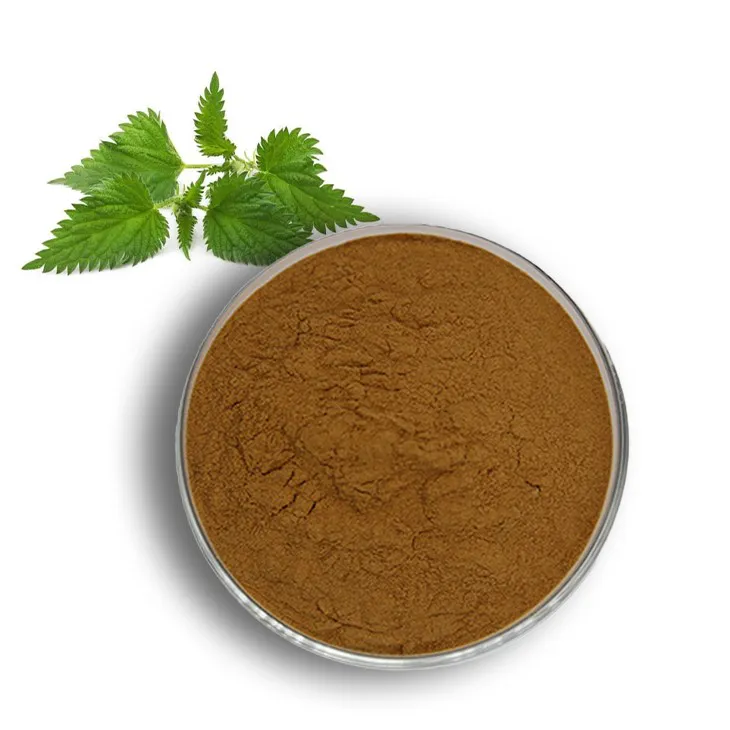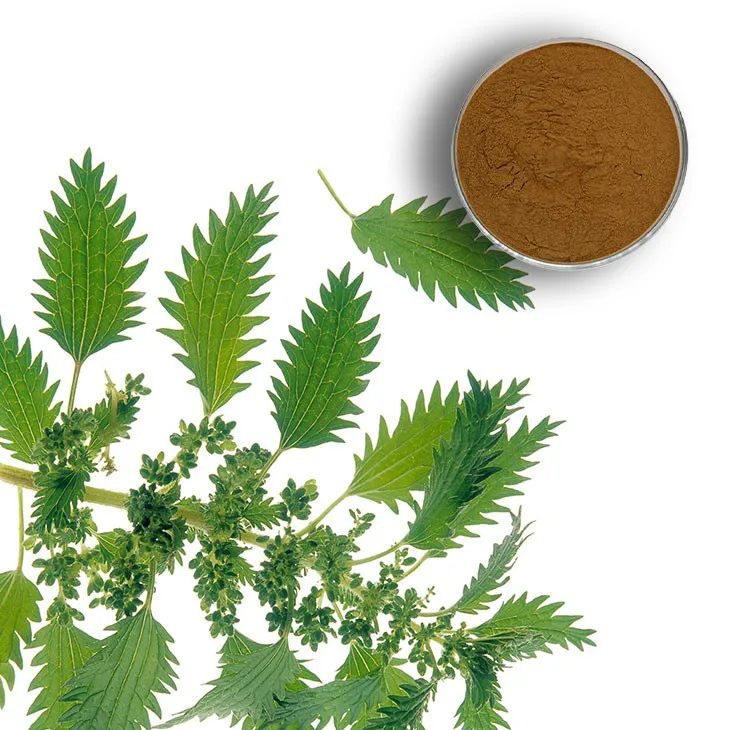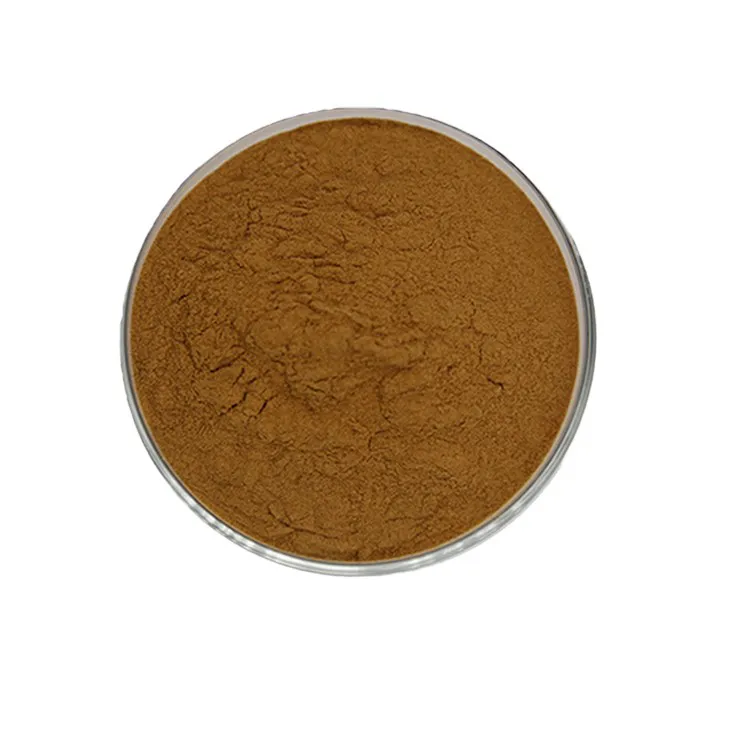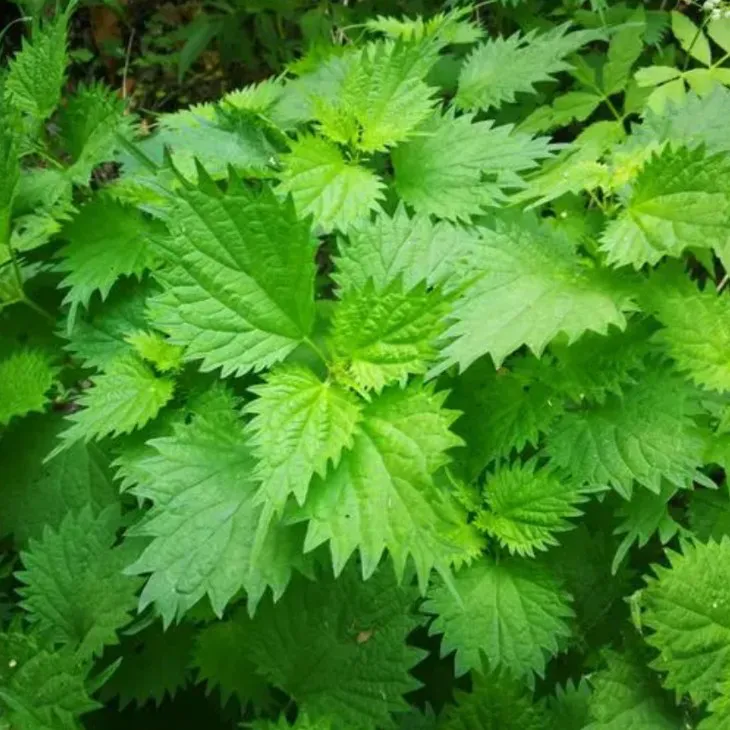- 0086-571-85302990
- sales@greenskybio.com
The process of extracting caffeoylquinic acid from nettle root in nettle root extract.
2024-11-29

1. Introduction
Nettle Root Extract has been the focus of increasing attention in recent years due to its rich composition of various substances. Among these substances, chlorogenic acid is of particular significance. Chlorogenic acid is a phenolic compound that has been associated with numerous potential health benefits, such as antioxidant, anti - inflammatory, and antimicrobial properties. Therefore, the extraction of chlorogenic acid from Nettle Root Extract is not only important for understanding the chemical composition of nettle root but also has great potential in the development of the health - care and pharmaceutical industries.

2. Preparation of Nettle Root Extract
2.1. Collection of Nettle Roots
The first step in obtaining nettle root extract is the proper collection of nettle roots. Nettle plants should be carefully selected from their natural habitats or cultivated sources. It is important to ensure that the nettle roots are harvested at the appropriate time of the year to maximize their content of active substances, including chlorogenic acid. Generally, nettle roots are collected during the plant's dormant season when the concentration of various metabolites is relatively high.
2.2. Pretreatment of Nettle Roots
Once the nettle roots are collected, they need to be pretreated before extraction. This may involve cleaning the roots to remove dirt, debris, and other impurities. The roots are often washed thoroughly with water and may be dried to a certain extent. Drying can be carried out at a moderate temperature to avoid the degradation of active components. After drying, the nettle roots may be cut or ground into smaller pieces to increase the surface area available for extraction, which is beneficial for the subsequent extraction process.
2.3. Extraction Methods
There are two common methods for preparing nettle root extract: maceration and Soxhlet extraction.- Maceration: Maceration is a relatively simple and traditional extraction method. In this process, the pretreated nettle roots are immersed in a suitable solvent. Commonly used solvents for chlorogenic acid extraction include ethanol, methanol, or a mixture of water and organic solvents. The nettle roots are left in the solvent for a certain period, usually several hours to days, depending on various factors such as the nature of the roots and the desired extraction efficiency. During this time, the solvent penetrates the root tissue and dissolves the chlorogenic acid and other soluble components. After maceration, the resulting mixture is filtered to separate the liquid extract from the solid residue.
- Soxhlet Extraction: Soxhlet extraction is a more efficient extraction method, especially for substances with relatively low solubility. In Soxhlet extraction, the nettle roots are placed in a Soxhlet apparatus. The solvent is continuously recycled through the nettle roots in the apparatus. The solvent vaporizes in the heating part of the Soxhlet apparatus, rises, condenses, and then drips back onto the nettle roots. This continuous process allows for a more thorough extraction of chlorogenic acid from the nettle roots. Similar to maceration, the final step in Soxhlet extraction is also filtration to obtain the nettle root extract.

3. Separation and Purification of Chlorogenic Acid from Nettle Root Extract
After obtaining the nettle root extract, further separation and purification steps are required to obtain pure chlorogenic acid.
3.1. Liquid - Liquid Extraction
Liquid - liquid extraction can be used as an initial separation method. Since chlorogenic acid has different solubility characteristics in different solvents, it can be selectively transferred from one solvent phase to another. For example, if the nettle root extract is in an aqueous - organic solvent mixture, by adding another solvent with different polarity, chlorogenic acid can be partitioned into a particular phase. This process can help to separate chlorogenic acid from some of the other components in the nettle root extract.
3.2. Column Chromatography
Column chromatography is a widely used purification method for chlorogenic acid. There are different types of column chromatography, such as silica gel column chromatography, reversed - phase column chromatography, etc.- Silica Gel Column Chromatography: In silica gel column chromatography, the nettle root extract is loaded onto a column filled with silica gel. The different components in the extract interact differently with the silica gel based on their polarity and chemical structure. Chlorogenic acid, with its specific polarity and chemical properties, will move through the column at a different rate compared to other components. By eluting the column with a suitable solvent system, chlorogenic acid can be separated from other substances and collected in a relatively pure form.
- Reversed - Phase Column Chromatography: Reversed - phase column chromatography uses a non - polar stationary phase and a polar mobile phase. This is particularly useful for separating chlorogenic acid from complex mixtures in the nettle root extract. The hydrophobic interactions between chlorogenic acid and the non - polar stationary phase, along with the elution power of the polar mobile phase, allow for the effective separation and purification of chlorogenic acid.
3.3. Preparative High - Performance Liquid Chromatography (HPLC)
For high - purity chlorogenic acid extraction, preparative HPLC can be employed. Preparative HPLC is a powerful technique that can achieve very high resolution separation. The nettle root extract is injected into the HPLC system, and the components are separated based on their different retention times in the column. By carefully controlling the operating conditions such as the flow rate, column temperature, and mobile phase composition, chlorogenic acid can be isolated in a highly pure state. However, preparative HPLC is relatively expensive and requires specialized equipment and skilled operators.
4. Characterization and Quality Control of Extracted Chlorogenic Acid
4.1. Spectroscopic Analysis
Once the chlorogenic acid is extracted and purified, it is necessary to characterize it to ensure its identity and purity. Spectroscopic methods are commonly used for this purpose. For example, ultraviolet - visible (UV - Vis) spectroscopy can be used to detect the characteristic absorption peaks of chlorogenic acid. Chlorogenic acid has specific absorption wavelengths in the UV - Vis region, which can be used to confirm its presence. Infrared (IR) spectroscopy can also provide information about the functional groups present in chlorogenic acid, helping to further verify its chemical structure.
4.2. Chromatographic Analysis
Chromatographic techniques are not only used for purification but also for quality control of the extracted chlorogenic acid. Analytical HPLC can be used to determine the purity of chlorogenic acid. By comparing the peak area of chlorogenic acid with that of other possible impurities in the chromatogram, the purity percentage can be calculated. Additionally, gas chromatography - mass spectrometry (GC - MS) can be used in some cases, especially when dealing with volatile derivatives of chlorogenic acid or for more comprehensive analysis of the sample composition.
4.3. Quality Standards
To ensure the quality of the extracted chlorogenic acid for use in the health - care and pharmaceutical industries, certain quality standards need to be established. These standards may include limits on impurity levels, minimum purity requirements, and specific criteria for the identity of chlorogenic acid. Regulatory bodies may also play a role in setting and enforcing these standards to ensure the safety and efficacy of products containing chlorogenic acid.
5. Potential Applications of Extracted Chlorogenic Acid
5.1. In the Health - Care Industry
Chlorogenic acid, with its antioxidant and anti - inflammatory properties, has great potential in the health - care industry. It can be used in dietary supplements to promote overall health and well - being. For example, it may help in reducing oxidative stress in the body, which is associated with various chronic diseases such as cardiovascular diseases and cancer. Additionally, chlorogenic acid may have potential applications in skin - care products due to its antioxidant properties, which can help in protecting the skin from environmental damage and aging.
5.2. In the Pharmaceutical Industry
In the pharmaceutical industry, chlorogenic acid may serve as a starting material for the development of new drugs. Its anti - inflammatory and antimicrobial properties can be explored further for the treatment of inflammatory diseases and infections. Research is also ongoing to investigate its potential in modulating various biological pathways, such as those related to glucose metabolism and lipid metabolism, which could have implications for the treatment of metabolic disorders.6. Conclusion
The process of extracting chlorogenic acid from nettle root extract involves several important steps, from the preparation of the nettle root extract through extraction methods such as maceration and Soxhlet extraction, to the separation and purification of chlorogenic acid using techniques like liquid - liquid extraction, column chromatography, and preparative HPLC. Characterization and quality control are also essential to ensure the purity and identity of the extracted chlorogenic acid. The extracted chlorogenic acid has significant potential in the health - care and pharmaceutical industries, which further emphasizes the importance of this extraction process. Future research may focus on improving the extraction efficiency, reducing costs, and exploring more potential applications of chlorogenic acid.
FAQ:
1. What are the main methods for preparing nettle root extract?
The main methods for preparing nettle root extract are maceration and Soxhlet extraction. Maceration involves soaking the nettle root in a suitable solvent for a certain period to allow the substances in the root to dissolve into the solvent. Soxhlet extraction is a continuous extraction method that can more thoroughly extract the components from the nettle root.
2. Why is chlorogenic acid in nettle root extract important?
Chlorogenic acid in nettle root extract is important because it has potential applications in the health - care and pharmaceutical industries. It may have antioxidant, anti - inflammatory, and other beneficial properties, which make it a valuable component worthy of study and extraction.
3. What are the common separation and purification methods for obtaining chlorogenic acid from nettle root extract?
Common separation and purification methods for obtaining chlorogenic acid from nettle root extract include chromatography techniques such as high - performance liquid chromatography (HPLC). HPLC can separate the chlorogenic acid from other components in the extract based on differences in their chemical properties and retention times in the chromatographic column.
4. Are there any challenges in the process of extracting chlorogenic acid from nettle root extract?
Yes, there are challenges. One challenge is to ensure the purity of the chlorogenic acid obtained. Since the nettle root extract contains a variety of substances, it is difficult to completely separate chlorogenic acid from other interfering substances. Another challenge is to optimize the extraction and purification processes to improve the yield of chlorogenic acid while reducing costs.
5. How can the study of chlorogenic acid extraction from nettle root extract contribute to the pharmaceutical industry?
The study of chlorogenic acid extraction from nettle root extract can contribute to the pharmaceutical industry in several ways. Firstly, if the chlorogenic acid has certain pharmacological effects, it can be used as a raw material for developing new drugs. Secondly, understanding the extraction process can help in the quality control of nettle - root - based pharmaceutical products, ensuring the consistency and effectiveness of the products.
Related literature
- Isolation and Characterization of Chlorogenic Acid from Nettle (Urtica dioica L.)"
- "The Potential of Nettle Root Extract in the Pharmaceutical Field: Focus on Chlorogenic Acid"
- "Optimization of Chlorogenic Acid Extraction from Nettle Root: A Comprehensive Review"
- ▶ Hesperidin
- ▶ citrus bioflavonoids
- ▶ plant extract
- ▶ lycopene
- ▶ Diosmin
- ▶ Grape seed extract
- ▶ Sea buckthorn Juice Powder
- ▶ Beetroot powder
- ▶ Hops Extract
- ▶ Artichoke Extract
- ▶ Reishi mushroom extract
- ▶ Astaxanthin
- ▶ Green Tea Extract
- ▶ Curcumin Extract
- ▶ Horse Chestnut Extract
- ▶ Other Problems
- ▶ Boswellia Serrata Extract
- ▶ Resveratrol Extract
- ▶ Marigold Extract
- ▶ Grape Leaf Extract
- ▶ blog3
- ▶ blog4
-
The best sources of natural lily extracts.
2024-11-29
-
Certified organic resveratrol extract.
2024-11-29
-
The Best Nutmeg Extract in 2024.
2024-11-29
-
Organic Hesperidin Powder Factory.
2024-11-29
-
The best organic vitamin C.
2024-11-29
-
Olive Leaf Extract Manufacturers from China.
2024-11-29
-
Hedyotis Diffusa Extract
2024-11-29
-
melatonin extract
2024-11-29
-
Artichoke Leaf Extract
2024-11-29
-
Avocado Extract Powder
2024-11-29
-
Panax Ginseng Leaf Extract
2024-11-29
-
White Willow Bark Extract
2024-11-29
-
Feverfew Extract
2024-11-29
-
Stevia Extract
2024-11-29
-
Shikonin
2024-11-29
-
Yam Extract
2024-11-29





















